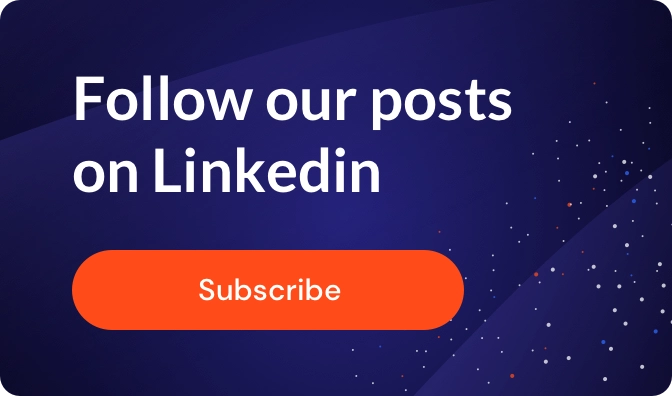By its very nature, corporate innovation requires a high level of involvement of the company’s employees. They are the ones who can deeply change the internal organization with their ideas and proposals. However, this is a process that is not necessarily spontaneous.
Just like a teacher in a classroom, the goal is to get as many hands up as possible among your teams. This idea of engagement is extremely important, since it is the engine of corporate innovation: it is the tool for collecting ideas to transform them into actionable processes.
To achieve this goal, the company can activate various motivation drivers: game techniques, rewards, sponsorship of top management. We explain how to activate them effectively.

Our 5 tips to boost engagement
Play and fun as drivers of engagement
Why wouldn’t an employee want to participate in a collaborative project? This may be due to a lack of self-confidence, self-censorship, or a sort of shyness (“why would anyone listen to me or be interested in what I have to say?”), a sense of disengagement from the company (“I’m not going to waste my time for them, they don’t care”), outright opposition motivated by ideological considerations (“yet another way to make employees work outside of working hours”), or finally a lack of knowledge of the project’s challenges (“it’s not my job to tell them what to do, aren’t there people who are paid for that?”). The aim of the project team is to promote commitment, despite the personal or professional barriers that are consciously or unconsciously instilled in the minds of employees. The most important driver is the concept of pleasure. Once a task can be turned into a game or play activity, it becomes easier to encourage involvement. It is, therefore, necessary to ensure that getting involved in a corporate innovation program is not an additional activity that burdens the employee, but, on the contrary, a sort of creative and stimulating break, where the personal contribution is used for the benefit of the group.Pay attention to your internal communication
Making employees want to come and return is also an internal communication issue. The point is to go beyond simple curiosity to create a constant dynamism. While the competition may seem like a good idea, this approach also raises many questions. Finding the first volunteers and, most importantly, motivating the project leaders for the following seasons is the key to success. However, the competition approach has an important flaw: participants enter to win something. It is an individualistic act to change the condition of the employee in his company. In other words, to get noticed by the management to accelerate one’s development or to facilitate a career change. Motivation is not associated with the collective desire to contribute to the company.Creating community dynamics
This can only be achieved by changing the culture of the company. To be effective, engagement must be community-based. It is necessary to find stratagems to create recurring interest in an original, sometimes covert, approach that transforms a selfish and personal action (to promote oneself and make oneself look good) into collective action (to participate in the well-being of the company). Transforming this culture depends mainly on middle management. Of course, top management must be the driving force, but it is not the top managers who deal with the day-to-day operational realities of employees. Discover concrete examples of engagement strategies deployed by our clients. And this is where a game can make a difference beyond human cognitive biases. It is a method of learning and collaboration that is common to all human cultures around the world. The best example is, of course, children: they learn through games, and in the most advanced schools, it is also through games that they can assert themselves, develop their personality, help others and develop both skills and behavior. Moreover, digital technology provides total scalability. Whether your company has 500 or 50,000 employees, the system and its deployment are the same. While gamification can foster the engagement of employees in a corporate innovation process, it is nonetheless not sufficient. Actually, a gamified approach is a good thing, but it takes a little more to encourage employees to use it.Transparency in participation and the rules of the game
From poker to Monopoly to a soccer game, no game can be without rules. They are there to structure, provide a framework and create the conditions for trust and commitment. Simplicity and transparency are essential. The more complex they are, the fewer participants you will have. The approach is open and collaborative, and there is no cheating or dirty tricks. Due to the self-regulation of the group, there is a spirit of kindness, without any central control or censorship. Finally, one fundamental and structuring rule must be always maintained: there is no room for anonymity. Everyone knows who says what, who does what, and the overall ranking allows for a global view of how one stands in relation to others. In both games and corporate innovation, ranking is a driver for engagement.Rewards for motivation
Satisfaction in a gaming process occurs both during the game and at the end of a round. For the system to work, there must be something to gain that is of sufficient value to motivate participants. Recognition is a significant driver, as is a monetary reward in gambling. Corporate innovation does not involve playing with the personal cash of employees but with a virtual currency system. You can also add a power gauge to expand your influence and decision-making. Thus, the more relevant the decisions made by the participants, the more power and virtual funds they get to improve their position.Cross-device access
For many employees, the smartphone has become the primary (and sometimes only) screen. As we move to a more mobile world, all business communications must synchronize seamlessly across all devices. What applies to email, calendars, document management in the cloud and instant messaging also applies to corporate innovation. Within innovation processes, there is now more mobile access than access from a desktop or laptop PC. As the boundaries between the personal and professional realms become blurred, more and more contributions are being made outside of work hours. No idea & innovation management software will work if it is not designed for cross-device usage. This ease of switching from one device to another is now totally ingrained in our consumption and work habits. What works on a daily basis must also be applied to all business-oriented platforms.Engage top management
No employee can be encouraged to embark on a project if the top management is not convinced, committed, or at least supportive. Senior managers can be engaged through a successful roll-out in which they were involved (demonstration, presentation, event, etc.), but also by playing the game and participating in the collaborative process. Imagine the impact if the CEO of a group, his deputy, or close associates took a few minutes once a week to look at and comment on the ideas and recommendations made by employees. It’s a simple approach with the highest stakes that can turn a “like” or comment into an accelerator of motivation and ideation.
Third party issues to monitor
No matter how hard you try, and no matter what the culture, the mindset, and the desire to move this project forward, there will always be employees who would throw a wrench in where it doesn’t belong. Despite all your best efforts, there will always be opponents. To know how to handle them in this situation, you need to know the key points of criticism and not give too much importance to the most confusing aspects. To make sure you are not taken by surprise, I have cleared the ground for you.The right to disconnect
This is an argument you may hear over and over again, given the high propensity of employees to contribute on their own time (commuting, at home, on weekends, etc.). We must be clear about this: a corporate innovation project is based solely on volunteerism and desire. Here, employees are encouraged to get involved, although in a very different context from the daily routine. No subordination or instructions from the manager, no activity reports, no monitoring or rating that could play any direct role in the employees’ daily routine. It involves a non-binding, non-compulsory, voluntary activity, without social pressure, and at the free discretion of the participants.Ownership of ideas
This is an issue that can arise when an idea develops into a project, and a project develops into a marketed product, a real innovation or a new service. Who owns it? What are the possible rewards? How can we monetize the engagement of an employee or a group of employees who have come up with the idea? Does it belong to the author, the contributors, the boards that selected the idea to fund it and take it forward or the business teams that are involved, too? It is important to be clear that all ideas belong to the company and no direct monetization would be recommended. On the other hand, there is nothing to prevent the company from paying a one-off bonus or otherwise appreciating employees who contribute. But it remains a case-by-case decision that must be made internally and as transparently as possible, regardless of the number and quality of the ideas shared. To avoid any risk of disputes or claims, it may also be useful to have this aspect managed by a legal expert or lawyer if you are concerned that this could create a bottleneck or generate particular misunderstandings.Choose the right innovation management software
The choice of technology behind the AI is important since it is an assistance system that must be appropriate. Some companies may want to go on their own and develop an internal system. I’d rather be honest with you, if that’s your intention, it’s a complete waste of time and money. Developing corporate innovation is much more effective by relying on existing tools. At Yumana, we use Microsoft AI technology at the core of the ideation engine. Using this innovation management software is an advantage because all companies know and use the relevant technology. In addition, I have noticed that large companies really trust Microsoft’s tools.How to involve your employees?
The key points to remember
- Gamification is an important driver for engagement and involvement. Do not underestimate it! Playing does not mean that the process is unprofessional. It is a very powerful vehicle for learning and collaboration.
- Involvement results from the confidence that your employees have in the system used. Knowing and simplifying the main operating principles (rules, uses, idea management software) ensures trust and transparency in your corporate innovation program.
- Because people sometimes have the shortcomings of their qualities, they might spend time trying not to get involved or to argue against it. While most of these tactics stem from a lack of understanding of the project’s stakes, be prepared for some resistance to the changes as well. If you are concerned about what you don’t know, don’t try to convince 100% of your employees. It’s a waste of time and energy.

Céline Degreef
CEO & Co-Founder Yumana


